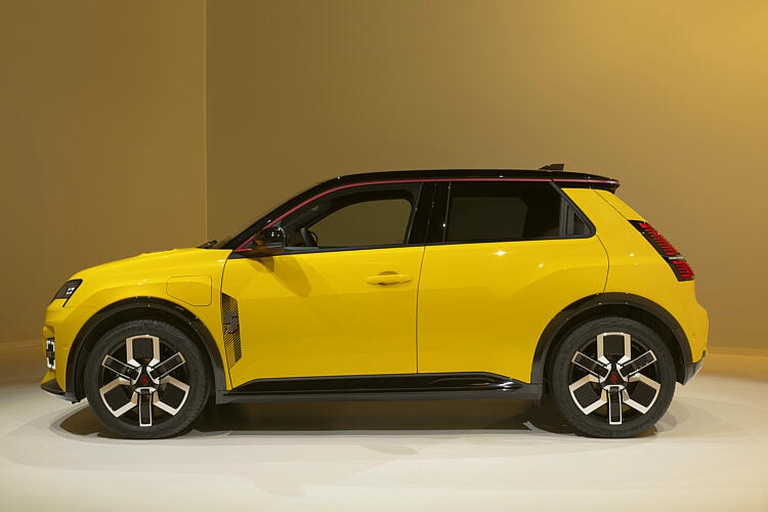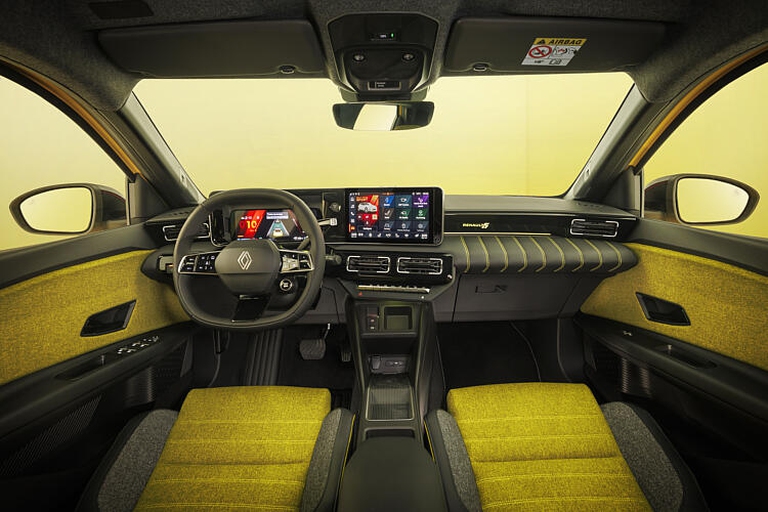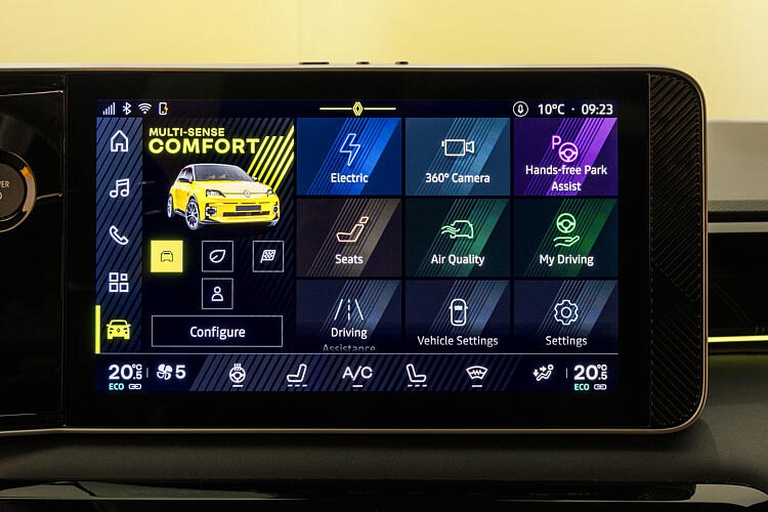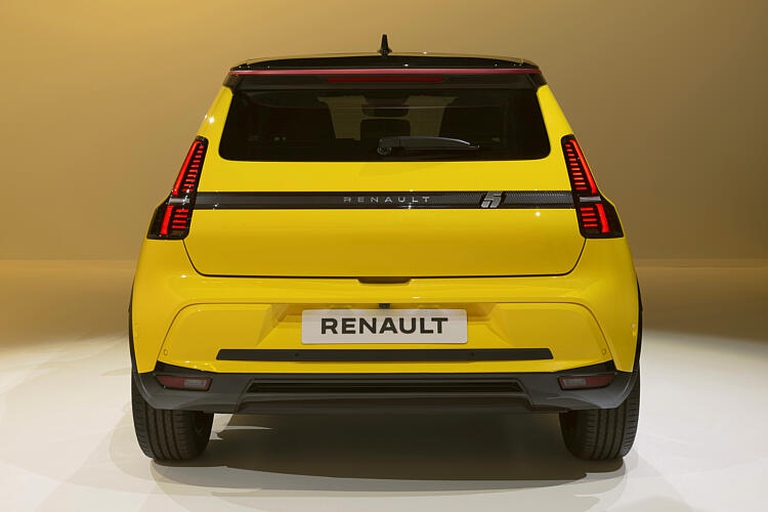https://www.lifegate.it/la-renault-5-rinasce-elettrica-ecco-comera-loriginale
- |
We are in France in the seventies, the compact car market is basically dominated by two models, Renault 4 And Citroën 2CV.In 1967, Pierre Dreyfus, the then director of Renault, asked his engineers to design a small car aimed at the widest possible audience.“The new car will have to be a “voiture à vivre” we read in the archives, “a car for all seasons, for holidays and for work, for weekdays and weekends, for the city and for the countryside”.We will have to wait until 1972 to see the first one Renault 5.Small, versatile, “brilliant and elegant” the print defines it.
For everyone more simply R5, also recognizable for its bright colors of the bodywork yellow, orange, blue, the first version has front-wheel drive and very economical engines, with a displacement that today makes you smile (782 or 956 cc);perhaps the most immediately visible innovation is the design of the polyester bumper, capable of resisting impacts up to 7 km/h.From the 1974 the Renault 5 achieves enormous commercial success, long the best-selling car in Europe after the Fiat 127, the second best-selling car in the world in 1980.A success story that lasted until 1996, when the production of the last evolution ceases, the Superfive.Today, that story resumes with a new chapter.
2024, the new (electric) chapter of the Renault 5 starts from here
February 26, Geneva, car show (for those interested the exhibition will remain open until March 3).The story of the French city car starts again from here, 28 years after the original model left the scene Renault 5 E-Tech Electric ready to become "a pop icon capable of making electric cars popular in Europe", at least according to the objectives of the French brand.The DNA remained:avant-garde, versatility, economy (on sale by end 2024, it will cost less than 25 thousand euros, a price destined to become truly accessible by taking advantage of the car incentives 2024, awaiting confirmation in March).In short, the Renault 5 is reborn as electric but does not betray its spirit, the one that made it popular in the Seventies and Eighties.
Having passed unscathed (or almost...) between oil crises and changes in lifestyle, today it is evidently something else entirely.Only electric, always compact and especially suitable for the city, produced in France, designed and built with an eye to energy efficiency, sustainability and the circular economy, the electric Renault 5 is built on a new platform dedicated to fuel-efficient vehicles. “zero” small emissions.“Renault 5 E-Tech Electric is not a car like the others.Given the transformations taking place in our sector, I am convinced that this car will open a new path for Renault,” he declared Luca de Meo, Group CEO Renault.

Three powers and up to 400 kilometers of electric range
Designed above all for the city, the electric Renault 5 is available in multiple engine and battery versions, with power levels of up to 110 kW and autonomy up to 400 kilometers.Two batteries available, from 52 kWh (the only option at launch, the others will be introduced after launch) and from 40 kWh, in this case the electric range drops to 300 kilometers. Three power levels:110 kW (150 horsepower), 90 kW (120 horsepower) or 70 kW (95 horsepower), with performances which, in the most powerful version, promise to be interesting:acceleration from 0 to 100 km/h in less than 8 seconds, from 80 to 120 km/h in less than 7 seconds and a top speed of 150 km/h.

The advantages of bidirectional charging
It is no longer new and will always be a feature present on new electric car models.Let's talk about bidirectional charging, i.e. the possibility, also present on the new Renault 5, of a V2L system (vehicle-to-load) which allows you to connect external devices to the car to recharge, or to transfer energy from the car battery to the home electricity grid (provided that it is set up and that the contracts allow it).
As for the charging times, the electric R5 if you use an 11 kW alternating current column, in the case of the 52 kWh battery it goes from 10 to 100 percent of autonomy in 4 and a half hours, (calculate one hour less for the 40 kWh battery).As always, times are reduced at public charging stations fast charging (in this case with powers up to 100 kW), where they might be enough (in the best cases) 30 minutes to go from 15 to 80 percent charge.

The Renault 5 remained "pop", even in size
Whoever designed it defined it fruit of "retro-futurism":“Pop colours, cheeky looking headlights, vertical rear lights, sculpted fenders, colored roof profiles, bonnet grille (from which it is possible to see the battery charge status from outside);the electric Renault 5 perhaps doesn't have the same charm as the original, but it certainly has personality.As always we leave the design considerations to you.Obviously, the needs in terms of safety, aerodynamics and efficiency have changed profoundly compared to the Seventies.
The dimensions have remained quite compact (it is long 3 meters and 92 centimeters, a reasonable increase compared to the 3.50 meters of 1972), the flat floor and the long wheelbase (2.54 meters between the front and rear wheels) offer good habitability, with a fair amount of space for those traveling in the back and for luggage (both of which are not essential aspects for a car designed primarily for the city).Among the curiosities, the possibility of tow a trailer up to 500 kg.
Colorful on the outside, jeans on the inside
On board, where the revolution is tangible, the Renault 5 E-Tech does not give up the large touch screen 10 inches, with a graphical interface that has maintained something pop, colourful, cheerful.The composer Jean-Michel Jarre took care of the on-board sound signals, but also the external "voice" that pedestrians of the electric Renault 5 can hear (Vehicle sound for pedestrians), an obligation on all electric cars when traveling at less than 30 km/h.Outside the colors remained "pop", especially the pastels were beautiful yellow And green, while the fabric returns inside jeans:robust, recycled, in the Techno versions it covers the seats, the dashboard and the internal door panels.

A virtuous example of circularity
The French manufacturer underlines how the sustainability of this model also depends on a value chain and a commitment in terms of circular economy;in particular, a note reports how “Renault 5 E-Tech Electric will reach a total recyclability rate of85 percent and will be made up of 22 percent materials from the circular economy, including 41 kilos of recycled polymers”, including seat fabrics, steering wheel and internal insulation, the latter made with materials of biological origin.




